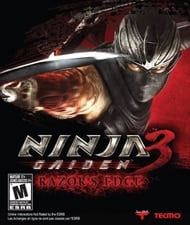Back In Black And Red
I was put off by Ninja Gaiden 3 when I first played it , which, as a long-time fan of the franchise, was painful to admit. Subsequent playtime with the title did nothing to assuage my resentment, which grew deeper and more insidious as I attempted to play the game’s arbitrarily frustrating Master Ninja mode and spent time in its janky, awkward online battles.
When Razor’s Edge was shown at E3 last year, I was immediately intrigued simply because of how much better it felt. It was released as a launch title for the new Nintendo console, with no word as to whether or not its alterations would make their way over to Xbox 360 and PlayStation 3 owners. Then, finally, confirmation came and now, game firmly in hand, I feel as though a yoke has been unfurled from around my neck.
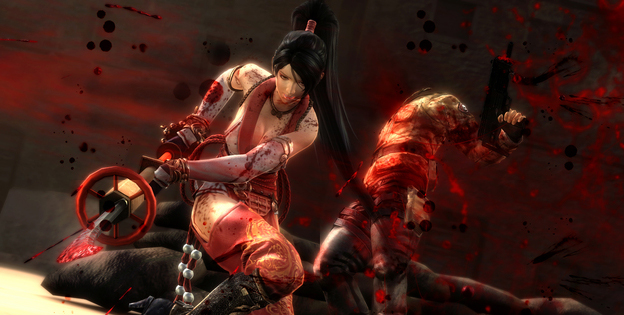
Josh Engen already touched on the basic differences that make Razor’s Edge a better, nicer Ninja Gaiden 3, but, as is always the case, there’s more to be said.
The surface changes to Ninja Gaiden 3: Razor’s Edge are obvious. Dismemberment has returned and, with it, the violence of combat is ratcheted back up a few notches. Enemies who’ve lost a limb don’t stumble around in a zombified daze, as almost-dead foes did in the original version, but relentlessly target Ryu (and Ayane, in sections in which she’s playable) with last ditch desperation attacks. Karma is no longer just a number, but a currency with which upgrades may be purchased, from new and more powerful ninpo to upgrades of weapons (there’s more than one weapon, now). Additional costumes and special abilities are also on the menu.
Tied to the Ninja Skill screen, which can be accessed freely at any time, both Golden Scarabs and Crystal Skulls return. While Golden Scarabs serve their usual purpose, opening up new skill options such as expanded health or entirely new weapons, Crystal Skulls now signify challenge rooms. These are excellent opportunities to farm karma, taking down a few waves of relentless foes before tackling a boss, typically from a previous entry in the series.
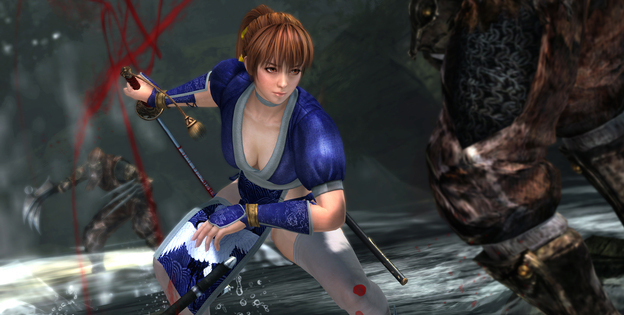
Meanwhile, Ayane is in the game as a playable character with her own missions. They’re substantial chunks of gameplay in well-designed levels, generally tighter than those Ryu fights in, which allows her to take more advantage of the environment. She’s agile and deadly, though she’s written as an oddly petulant teenager, which doesn’t really seem to fit with her original personification in the Dead or Alive games. The story in these won’t really blow you away, but they certainly clarify one of the more perplexing moments from the original version.
Combat alterations are palpable, though. Enemy A.I. is smarter, with foes dashing in and out of range, some staying on the outside and firing at you as others charge in for the kill. Combat is definitely hectic, but it regains that distinct edge for which previous Ninja Gaiden games were so notable. No longer does monotony take hold, as battles are no longer interminable slaughter boxes in which foes keep coming for ten or twenty minutes at a time as you mow them down in a war of constant attrition.
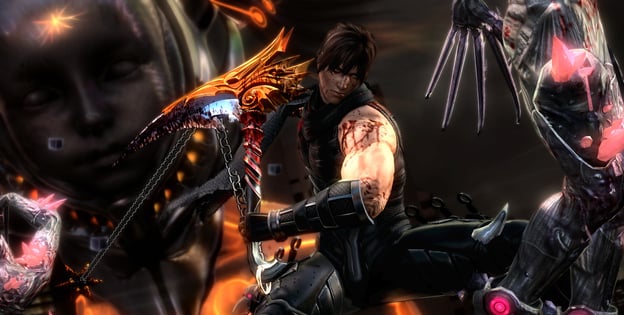
The very flow of combat has changed, in fact, in part because of some rebalancing of Ryu’s basic moveset. The slide, which replaces the roll and dash of the first two games, is shorter and more controlled. It can also be used to cancel out of the wind down animations from many combos, now, allowing players to respond quickly to sudden shifts in enemy tactics or cover for unfortunate mistakes without leaving a deadly opening. Ultimate techniques are no longer something someone must wait to use, as they can be charged by holding the heavy attack button or a short time. As Ryu’s weapons are leveled, the ultimate charge can be extended across multiple tiers, the highest of which will come out automatically whenever the player’s arm/weapon turns red. The techniques themselves feel less automated than in the original version, requiring initial contact with a foe to set off even the most basic one. They also don’t serve as a guaranteed kill anymore.
The best change to the basic combat mechanics of the game, though, is found in its much-vaunted Steel on Bone maneuvers. In the first game, these were an oft-confusing addition that would trigger almost randomly during combat. Ryu would strike, and suddenly his sword would be caught in his foe. Pressing an attack button would continue the cut and finish them off. Later, when ways to trigger them at will were discovered and it was found that they could be chained together, players abused them relentlessly.
Razor’s Edge turns them into a counter.
It’s a way of punishing foes who attempt a heavy attack. If you avoid the heavy blow (signaled by a distinctive aura) and counter with a heavy strike of your own in a brief window, Steel on Bone is initiated. This limits its prevalence, but makes it a much more satisfying mechanic. Steel on Bone strikes can still be chained together, but there’s a hard limit as to the number of them, dictated by the level of one’s weapon.
Meanwhile, the Ki meter is used for more than just ninpo now. While a fully-charged meter allows one to fire off a powerful magic attack (of which there are now multiple, each with a different length of Ki bar), players can instead use it, if they’ve purchased the relevant abilities, to restore additional health between combat (in the original game, this happened automatically), evade an attack with the press of a button, or aim with the bow in mid-air. This adds a new strategic element to the game. Is it worth it to fire off a ninpo now when it might only heal a fraction of your health, or should it be saved until after combat, for meditation?
The ninpo, too, are somewhat smoother now, controlling as they did in Ninja Gaiden 2, rather than automatically cannibalizing all foes in the current combat.
In fact, “smoother” might be the best descriptor for the game in general. Awkwardly stilted quick time events and odd story beats have been excised or minimized, while combat has been made far less “sticky” than it was in the original version. This carries over to the multiplayer and trials as well, which are largely unaltered (other than coupling the leveling mechanic with a skill purchase menu a la the story mode), but benefit tremendously from the improved controls, and the ability to carry out your own desperation kills and bring a foe down with you. Ryu (or the unnamed ninja in multiplayer) feels more fluid, more mobile and, while combat definitely feels more dangerous, it’s exhilarating instead of frustrating.
Most of the time.
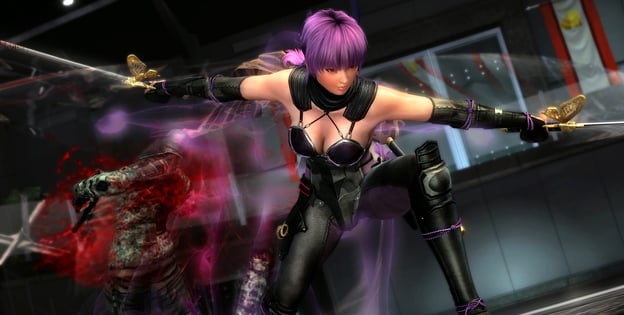
There are, unfortunately, exceptions. One boss fight against an airship stands out in particular for combining the worst elements of the game’s camera (which still doesn’t always know where it should be) with the bow’s overly-insistent auto-aiming to create a scream-at-the-screen-and-throw-the-controller moment. This was exacerbated by the game’s mid-fight checkpointing, which keeps track of how much health you have when you first hit the checkpoint. Normally that’s not an issue, but here it made the last section of the fight unnecessarily frustrating, and there wasn’t an easy way to start the entire conflict over.
The dinosaur boss fight, meanwhile, might actually be more monotonous than it was originally, though it, and all boss fights, are definitely better for them having implemented health bars for these signature foes. At least then you have a vague idea of how long the frustration will last.
Really, it’s these little tears at the seams that keep Ninja Gaiden 3: Razor’s Edge from being utterly exceptional—the places in which the game plays against its strengths, rather than to them. The game could have benefited in taking just a bit more from the structure of older games in the series. While the mostly linear environments serve to keep the action moving at a fast pace and provide a certain cinematic flair, I sometimes missed the more open exploration elements of the previous games. I also found that combat, without an easy way to heal mid-fight without saving up for and using ninpo, still turns many fights, especially boss battles, into wars of attrition. It’s very possible to have low health and no options except extreme care, whereas the previous games tended to dole out more health drops when the going got tough. It’s minor stuff like this that adds unnecessary frustration to an otherwise stellar retooling of a disappointing title.
RATING OUT OF 5 RATING DESCRIPTION 4.0 Graphics
The engine is showing its age, but everything runs smoothly and looks as you’d expect, while the return of dismemberment adds a visceral thrill to the combat. 4.5 Control
A tremendous improvement over the original version, with a tighter and more controlled feel, increased options on how to approach combat, and more responsiveness. 4.0 Music / Sound FX / Voice Acting
Personally, I really like Ninja Gaiden 3’s soundtrack. The original game came with an audio CD, and I’ll still pop it in every so often while driving, if only for that awesome title screen track. 4.0 Play Value
There are ninja trials to be had and multiplayer to enjoy, all of which feels fresh again thanks to the changes to how they’re implemented. 4.1 Overall Rating – Great
Not an average. See Rating legend below for a final score breakdown.
| Review Rating Legend | |||
|---|---|---|---|
| 0.1 – 1.9 = Avoid | 2.5 – 2.9 = Average | 3.5 – 3.9 = Good | 4.5 – 4.9 = Must Buy |
| 2.0 – 2.4 = Poor | 3.0 – 3.4 = Fair | 4.0 – 4.4 = Great | 5.0 = The Best |
Game Features:
